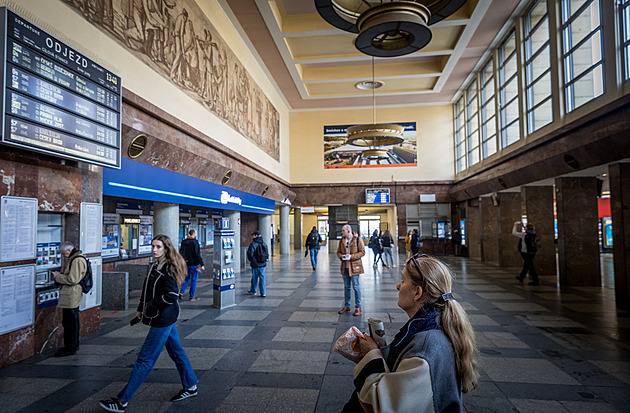Flying over Russia: Chinese airlines win and Europeans lose
While European airlines are cutting routes, Chinese carriers are increasing connections with the continent.
BRUSSELS — European flights to China have become longer, more expensive and even harder to find as more and more airlines cancel routes — but Chinese airlines are facing no such problems.
It’s a side effect of Russia’s war on Ukraine, which has led to tit-for-tat sanctions between the Kremlin and Western governments, including the closure of Russia’s vast airspace to European airlines. But that doesn’t affect countries like China with warmer Kremlin ties.
“It is a competitive disadvantage for the European carriers. That’s clear,” said Berlin airport CEO Aletta von Massenbach.
With the world’s largest country turned into a giant no-fly zone for Western operators, passenger and cargo carriers are forced to take longer routes to avoid Russia — and bear the costs associated with burning more fuel and paying overtime for pilots and cabin crew.
The struggle to turn a profit on travel between Europe and Asia has led several airlines, including Lufthansa, British Airways and Poland’s LOT, to suspend some routes.
Instead, Chinese and other non-European carriers are increasing direct flights from Asia to European cities.
“Our airlines serving, for example, Berlin-Beijing have to take a different route if it’s a German airline compared to a Chinese airline,” von Massenbach said.
After at least five European airlines canceled flights to Asia, the European Commission promised in October a study on competition in international routes touching upon this issue. But the airline industry remains skeptical that Brussels will act.
“I don’t expect anything to come out of this,” said Willie Walsh, director general of the International Air Transport Association (IATA) airline lobby.
“You could make a case that the airlines that have been impacted by the political decision should be compensated. But I doubt there’s much appetite in in the Commission or the European countries to do that,” Walsh added.
Customers always pay
A recent research paper highlighted the rising costs and fares associated with Russian and Ukrainian airspace closures.
“For the Finnair connection Helsinki-Beijing the increase in distance is 1,729 nautical miles [3,202 kilometers], resulting in extra travel time of almost four hours,” wrote David Ennen and Florian Wozny, researchers at the German Aerospace Center.

All European airports “north of the 50th degree of latitude experience significant increases in flight time of more than 100 minutes on some routes,” the paper stated — covering cities like London, Paris, Brussels, Amsterdam and Frankfurt. Those north of the 57th parallel — largely Nordic capitals — “are even more affected, with flight time increases on some routes of more than 200 minutes.”
Ennen and Wozny calculated that for flights between Europe and Asia that depart above the 50th parallel, “the [average] increase in airfares is $43.47 or 5.4 percent of the mean” ticket price.
“Above the 57th degree of latitude, the increase in airfare is $90.33 or almost 15 percent.”
In general, “changes in travel time above 5 minutes and below 60 minutes increases airfares by $59. Between 60- and 120-minutes travel time increase, airfares increase by $190.”
These figures are having a devastating effect on the market for some routes.
European airlines leaving China
The October cancellation of the Warsaw-Beijing route by LOT Polish Airlines due to higher operating costs was only the latest white flag waved by European airlines.
Scandinavian Airlines had previously announced the suspension of its Copenhagen-Shanghai route, while the Lufthansa Group recently confirmed that it was dropping its daily direct flight from Frankfurt to Beijing.
British Airways also canceled its London-Beijing route at the end of October, around same time as Virgin Atlantic’s last flight from London to Shanghai departed.
While European airlines have been hit hard by the geopolitical situation, some non-EU carriers are taking advantage.
Air traffic taken over by China
Last summer, China Eastern Airlines announced that it was increasing its European capacity to 19 routes and 244 weekly round trips.
China Southern Airlines, which recently launched a direct service from Budapest to Guangzhou, now serves 11 destinations in Europe.
The largest Chinese passenger carrier flying to Europe is Air China, which counts “32 routes and 53 daily flights, exceeding the 2019 level by 116 percent,” the Global Times, a publication owned by the Chinese Communist Party, reported.

Chinese airlines now account “for 77 percent of traffic between China and Europe, up from 50 percent pre-pandemic,” analyst Piotr Grobelny wrote in October. “In some markets, like Italy and the U.K., Chinese carriers now hold as much as 100 percent and 95 percent of the market, respectively.”
“For the European carriers, the strategy at the moment is to acknowledge the injustice, but they have been fairly quiet on the point, accepting the political realities,” Andrew Charlton, managing director of the Aviation Advocacy consultancy, said. “They could try to lobby for competitors to have to honor the airspace closure too, but that is never really going to fly.”
Walsh argued that the closure of Russian airspace “has nothing to do with safety, nor with security” and said that the European airlines are “the victims of politics.”
“I would hope that we’ll see an end to the war in Ukraine and that we will see a return to a more normal environment,” he added. “Maybe that’s wishful thinking, but I would expect that that’s what everybody wants to see.”
CORRECTION: This article has been updated to clarify who is being quoted.
What's Your Reaction?


















































